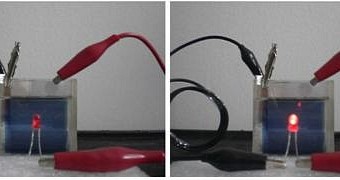It seems that the more advanced buildings become, the more windows they have. Coming up with a way to give those structural weaknesses a role besides allowing light in (and looking nice) is an ongoing project. A group of scientists might be on to something though.
Self-powered devices will probably remain a pipe-dream forever, just like the perpetuum mobile, a mechanical construct that can forever stay in motion without any outside energy or force helping along.
However, as an everlasting ideal, it works great, because it gives inventors ideas for new sorts of devices and sources of energy.
On that note, let's look at what Professor Xiong Wen (David) Lou and Professor Xiao Wei Sun at Nanyang Technological University have for us. They and their group have created what essentially amounts to a self-powered window.
The self-powered smart window
Contrary to what you might have expected (or hoped for), this isn't a window that can double as a solar panel, even though something like that would be awesome to see.
No, what the new smart window possesses is a sensitivity to change color depending on its exposure to air.
It's all thanks to the electrochromic (EC) material Prussian blue (PB), which turns to and from Prussian white (PW) thanks to how the iron in the PB is reduced to the point where it gains an electron from (in this case) aluminum (Al).
In layman's terms, the scientists created electrodes out of PB and Al, with the former being the cathode and the latter the anode.
When the electrodes are connected to the glass, it goes from blue to transparent in 4 seconds. The transmittance of the smart window changes by 52% or so between the blue and transparent states.
Up to when it becomes completely transparent, the window can power an LED. After that, disconnecting the PB and Al electrodes causes the window to recharge by oxidizing the iron in the electrode. The blue color returns to the window over time. It takes about an hour.
What this means in layman's terms
It's a huge reversal to how batteries work. Normally, they have to be isolated from oxygen because it decreases the battery voltages, but here it's the other way around. If the technology becomes efficient enough, it could power electronics in a home just by being there, a window in a wall.
We can definitely see the technology being used for self-powered smart windows that can double as TVs or message screens and whatnot. Even the ability to determine indoor heat and light management would be enough to get it in every office building.

 14 DAY TRIAL //
14 DAY TRIAL //